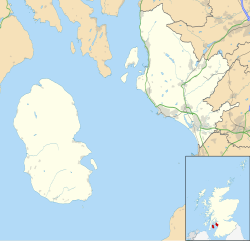- Yin afternin I took a walk, frae Beith doon tae the Den,
- Tw'as there I spent some happy days, but its many years since then,
- The place its maist deserted noo, there's just a hoose or twa,
- The office and the store are doon, and they hinna left a raw.
- I daunert up the road a wee, and stood and lucket roon,
- I couldna see a soul about, nor could I hear a soon,
- An o'the Den is gey sair chinged, frae the Den that I hae seen,
- When the pits were gaun an' the wee Flit Baun an' a senior fitba
- The House that Jack built's stinnin yet, but noo it is the Co.,
- The wee shop that Allan kept is doon long long ago.
- The big Lawn's gone an' the Cobblers Shop, and Granny Walkers work
- An' the wee Schill Raw its doon an a', that stood fornent the kirk.
- The Auld Hoose is stinnin yet, we kent it best by Pugs,
- But there's no a buddy rinnin noo, wi bottles or wi jugs.
- For noo its lost its license, an' there's no a drap ava,
- Though miny a bottle has been selt, through the wee hole in the wa'.
- Up on the know at last I sclimed, an' stood an' lucked roon,
- On the Meidow Heid, the Maulside an' the dear auld Boolin Green.
- Then I turned roon the ither way, an' see the same auld schill,
- But there's no a wain gaun tae it noo, an' aw the place is still.
- When we were callans at the schill, an' got our holidays,
- We ran about the heather moss, or up on Rabbie's Braes.
- An' in Bumbo we had a dook, or up some bing would sclim,
- Then hungry we would hurry hame, an' doon the Cullhill rin.
- The happy days have lang since gone, we're no sae young ye ken,
- When past our sixtieth milestone we're nearing journeys end,
- An' noo am feeling kinda stiff, bit a wis soople then,
- When I played fitba in the MA Alley, wae the callants o' the Den.
- Of the old folk I remember, like the hooses now all gone,
- With their weird and wonderous nicknames, still their memory lingers.
- There was Stulty Bell, an' Fish Kate, Laddelty an' Lum,
- The Cobbler, The Butcher, The Sailor an' Pug Young.
- There was Tam the warmer CooCoo, Pluffy Deans an' Tam the Baker,
- Auld Ooorie, an' Bummer, now all gone to their Maker,
- An' as I stand at the corner, as I do now an' then,
- It makes me very proud to say, I was born in the DEN. [31]
|






